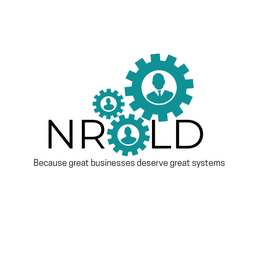From Your Kitchen to Business: Monetize Cooking Skills
In a world of busy schedules and a growing appreciation for good food, your culinary talent is a real asset. You can start a small side hustle from your home, teach others what you know, or build a digital food brand.

This guide provides a practical, step-by-step framework to help you turn your passion for cooking into a profitable venture.
Step 1: Find Your Niche and Understand the Rules
Before you cook your first dish for a customer, you need a clear plan. A strong foundation will set you up for success and help you stand out from the competition.
1. Find Your Culinary Niche.
You cannot be the best cook for everyone. Trying to offer everything means you are a master of nothing. A niche makes you a specialist, and specialists can charge more. Your niche is what makes you unique.
How to find your niche:
- What type of food do you love to cook most? Are you brilliant at baking? Do you make amazing vegan food? Are you an expert in a specific regional cuisine, like Thai or Mexican?
- Who do you want to serve? Busy families? Health-conscious professionals? People with food allergies?
Examples of Strong Niches:
- Healthy, pre-made weekly meals for busy professionals.
- Artisanal sourdough bread and pastries.
- Custom-decorated cakes and cookies for celebrations.
- Authentic, regional Italian pasta dishes.
- Gluten-free or vegan baked goods.
2. Know the Food Laws in Your Area.
This is the most important step. You cannot ignore it. Food safety and business regulations are serious.
- Research "Cottage Food Laws" in your state or region. These laws often allow you to prepare and sell certain low-risk foods (like baked goods and jams) from your home kitchen.
- Contact your local health department. They can tell you what licenses or permits you need to operate a food business, even a small one.
- Get a business license. You will likely need a general business license to operate legally.
Understanding the rules protects you and your customers. It shows you are a professional.
Step 2: Start with Services (The Direct Income Path)
This is the fastest way to start making money. You are offering your time and skill directly to a customer.
1. Become a Personal Chef or Offer a Meal Prep Service.
Many busy people want healthy, home-cooked meals but don't have the time to cook.
- What you do: You can go to a client's home to cook or prepare a week's worth of meals from your own kitchen (if laws permit) and deliver them.
- Example: You offer a "Weekly Meal Prep Package" for a family. You provide them with five different, ready-to-heat dinners for the week, based on their dietary needs.
2. Start a Small Catering Business.
If you enjoy cooking for crowds, this is a great option. Start small.
- What you do: You provide food for small events like birthday parties, baby showers, or corporate office lunches.
- Example: Your first gig could be catering a 20-person lunch for a local office. You provide sandwiches, a large salad, and a dessert platter.
3. Teach Cooking Classes.
Share your passion and skills with others. You can do this in person or online.
- In-person classes: You can partner with a local community center or even host small groups in your own home.
- Online classes: Use a platform like Zoom to teach a live class. This allows you to reach a global audience.
- Example: You offer a "Virtual Pasta-Making Class" on a Saturday afternoon. Participants pay for the class, and you send them a list of ingredients to buy beforehand.
Step 3: Sell Your Food Products (The Scalable Product Path)
This involves creating a specific food product that you can make in batches and sell.
1. Sell at Farmers Markets or Local Fairs.
This is a classic way to test your product and get direct feedback from customers.
- What you do: You rent a booth and sell your packaged goods.
- Example: You spend the week baking artisanal bread or making unique flavors of jam. On Saturday, you sell them at your local farmers market. Great packaging and free samples are key to success.
2. Create a Packaged Food Product.
If you have a standout recipe, turn it into a product you can sell in stores or online.
- What you do: This is a bigger step that involves branding, labeling, and professional packaging. You might sell your products online or approach local specialty food shops.
- Example: You create a line of unique, small-batch hot sauces. You design a cool label, get the right bottling, and start by selling it on a simple e-commerce website.
Step 4: Build a Digital Brand (The Content and Expertise Path)
This path allows you to monetize your knowledge and reach a massive audience. It's less about selling food and more about selling your expertise as a cook.
1. Become a Food Blogger or Vlogger (YouTube).
This is a long-term strategy, but it can be very profitable.
- What you do: You create a website or YouTube channel where you share recipes, cooking techniques, and kitchen tips.
- How you make money: You earn income through display ads, affiliate marketing (linking to products you use and earning a commission), and brand sponsorships.
2. Write and Sell a Cookbook or E-book.
Package your best recipes into a collection that people can buy.
- E-books are a great starting point. You can write an e-book on a niche topic like "30-Minute Vegan Dinners" or "The Ultimate Guide to Sourdough Baking." You can sell it directly on your website or on Amazon Kindle Direct Publishing (KDP).
3. Create a Paid Recipe Club or Newsletter.
This is a modern way to build a community around your cooking.
- What you do: You use a platform like Patreon or Substack to offer exclusive content to paying subscribers.
- Example: For $5 a month, your members get access to one exclusive recipe each week, behind-the-scenes videos, and a monthly Q&A session with you.
Action builds business. Start small, start smart—then scale.

This content is AI-assisted and reviewed for accuracy, but errors may occur. Always consult a legal/financial professional before making business decisions. nrold.com is not liable for any actions taken based on this information.


